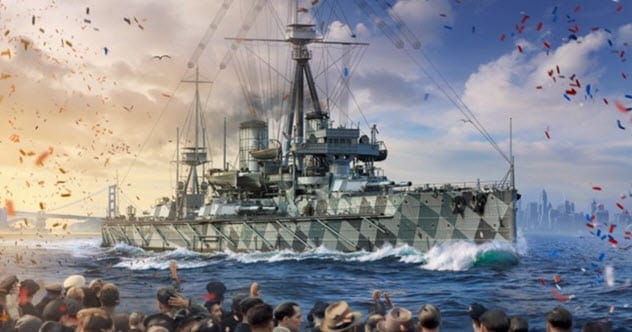Throughout history, advancements in weaponry and vehicles have often dictated the outcomes of wars. The vehicles that delivered these weapons to the battlefield have etched their names in history, fundamentally altering how wars are planned and executed. From the skies to the seas and the land, these vehicles have reshaped military strategies and redefined combat itself.
Consider the impact: How would the atom bomb have changed history without the aircraft to deliver it? What would naval warfare look like without the stealth and power of submarines? These innovations shifted the very foundations of military operations. Let’s delve into ten historic combat vehicles that have significantly changed the face of war.
Enola Gay
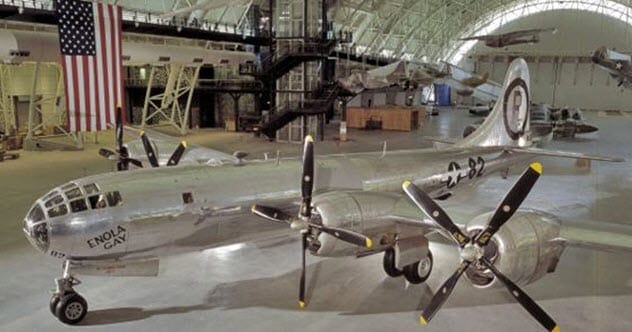
On August 6, 1945, the Boeing B-29 Superfortress, named Enola Gay, embarked on a pivotal mission. Piloted by Colonel Paul Tibbets Jr. and carrying the atomic bomb “Little Boy,” the Enola Gay targeted Hiroshima, Japan. At 8:15 AM local time, the bomb was released, plummeting from an altitude of 9,470 meters (31,060 ft) and detonating at 600 meters (1,968 ft).
The resulting explosion decimated nearly 70 percent of Hiroshima’s structures and killed approximately 30 percent of its population. Even 18.5 kilometers (11.5 mi) away, the crew of the Enola Gay felt the shock wave.
Upon its return to Tinian, the crew was celebrated, with Colonel Tibbets receiving the Distinguished Service Cross. Deployment of such a devastating weapon dramatically influenced military and governmental strategies worldwide. Displayed at the National Air and Space Museum in Washington, DC, the Enola Gay remains a chilling reminder of its impact.
Turtle
While the concept of submersible crafts emerged in the 17th century with Cornelius van Drebel, it was American inventor David Bushnell who first envisioned a submarine for military purposes. Bushnell designed and constructed the Turtle, a 2.4-meter (8 ft) wooden vessel intended for delivering underwater mines.
Powered by hand and operated by a single person, the Turtle utilized lead ballast for stability. During the American Revolutionary War in 1775, Ezra Lee piloted the Turtle in an attempt to attach a timed bomb to the HMS Eagle in New York Harbor on September 7, 1776.
Although undetected, Lee was unable to penetrate the ship’s iron hull. The bomb detonated nearby without causing significant damage. Despite its failed mission, the Turtle proved the viability of submarine warfare, paving the way for future naval advancements.
Little Willie
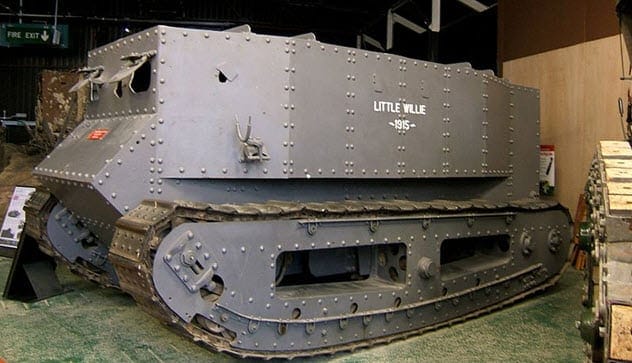
While tanks may seem less crucial in modern warfare, their introduction profoundly impacted land combat tactics. The story begins with “Little Willie,” a 14-ton prototype created by the British Army in 1915.
Though slow and prone to getting stuck, Little Willie was the first armored vehicle. Its successors quickly evolved into combat-ready machines. The Mark I tank saw action during the First Battle of the Somme, and the Mark IV became the British Army’s primary battle tank.
Tanks were designed to overcome the brutal trench warfare of World War I. The Mark IVs effectively captured enemy soldiers and artillery. By World War II, tanks were central to both Allied and Axis forces, dominating land warfare for much of the 20th century.
USS Monitor
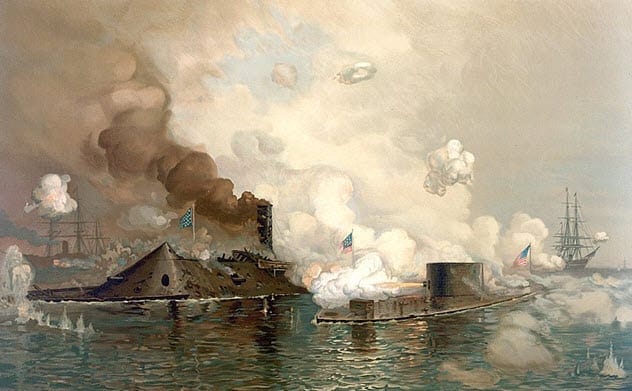
For centuries, wooden sailing ships dominated naval warfare. However, the emergence of ironclads in the mid-19th century signaled a dramatic shift. The USS Monitor, commissioned in February 1862 during the US Civil War, introduced innovative features that would redefine naval combat.
Unlike traditional sailing vessels that could be crippled by damaging masts and sails, the Monitor was steam-powered and largely submerged, making it a challenging target. A rotating turret armed with two 11-inch smoothbore guns provided formidable firepower.
The Monitor engaged the CSS Virginia, the Confederacy’s first ironclad, in its first combat action. Although the battle ended in a draw, the effectiveness of ironclad ships led to the decline of wooden sailing ships and the modernization of navies worldwide.
Bleriot XI
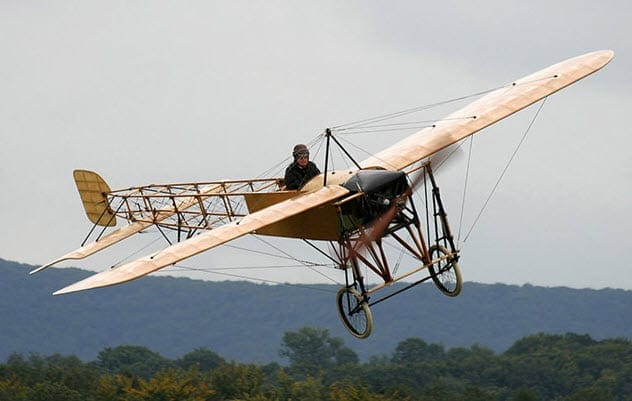
Airplanes entered the theater of war in 1911 during the Italo-Turkish War. The Bleriot XI monoplane, flown by the Italians, conducted a bombing mission over the Turkish camp at Ain Zara, Libya, marking the first use of an airplane in combat.
This early aircraft lacked modern conveniences like a canopy or a bomb-releasing mechanism. Pilots had to manually drop bombs, hoping to hit their targets. Despite these limitations, some pilots became skilled at delivering bombs weighing up to 25 kilograms (55 lb).
Second Lieutenant Giulio Gavotti became the first pilot to drop bombs in combat on November 1, 1911. This event ushered in the era of aerial combat, which has continued evolving for over a century.
V-2 Rocket
Developed by the German Army during World War II, the V-2 rocket was intended as a “vengeance weapon” targeting Allied cities in response to bombings of German cities. Designed by Wernher von Braun, the V-2 represented a significant advancement in rocket technology.
First deployed in September 1944, the V-2 could carry a 1,000-kilogram (2,200 lb) warhead over a distance of 320 kilometers (200 mi). Despite its high cost and limited reliability, the V-2 rocket became the world’s first long-range guided ballistic missile.
The V-2 reshaped warfare by spurring governments worldwide to invest in rocketry. This led to the development of submarine-launched rockets, underground bunkers, and vehicle-mounted systems, contributing to the proliferation of intercontinental ballistic missiles.
Messerschmitt Me 262
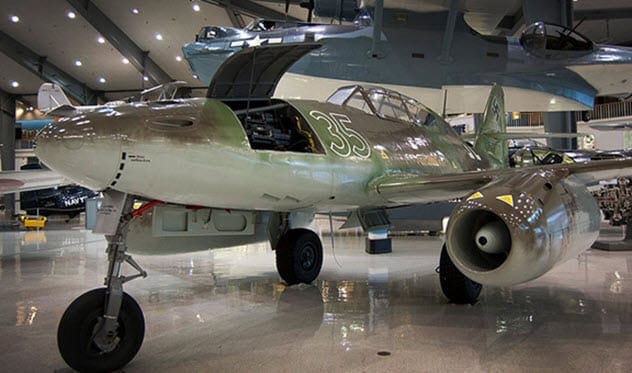
Prior to World War II, aircraft design primarily focused on propeller-driven engines. The introduction of jet-powered aircraft marked a significant turning point, with the Messerschmitt Me 262 leading the charge.
The Me 262, the world’s first operational jet-powered fighter aircraft, represented a leap in aviation technology. Faster and more heavily armed than its contemporaries, it instilled fear in Allied pilots.
Limited deployment prevented it from altering the course of World War II. However, its captured designs heavily influenced post-war aircraft like the North American F-86 Sabre, Boeing B-47 Stratojet, and MiG-15, leading to the eventual phasing out of propeller planes in combat.
HMS Dreadnought
Naval dominance was once defined by battleships, and the launching of the HMS Dreadnought in 1906 revolutionized naval power. The term “dreadnought” became synonymous with the first generation of modern battleships.
The Dreadnought featured ten 12-inch guns, twenty-seven 12-pounder 3-inch guns, and five 18-inch torpedo tubes, with armor ranging from 7.6 to 30.5 centimeters (3–12 inches) thick. Though it missed major World War I battles due to refitting, its design inspired vessels that dominated naval operations until 1991.
Hosho
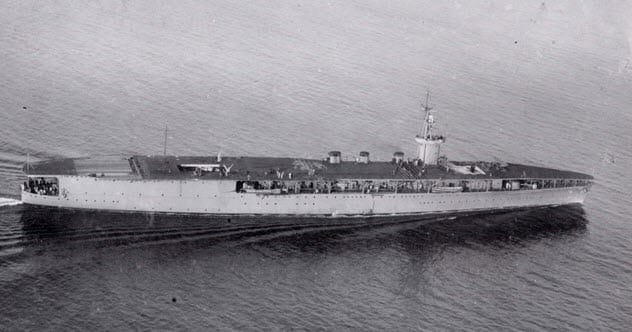
The aircraft carrier significantly impacted 20th-century naval warfare. While attempts to operate fixed-wing aircraft from ships began in 1910, it wasn’t until 1922 that the Imperial Japanese Navy commissioned the Hosho, the first purpose-built aircraft carrier.
The Hosho accommodated 15 aircraft and a crew of 512. It participated in World War II combat operations, including the battles of Pearl Harbor and Midway. The success of the Hosho influenced the design of future aircraft carriers.
Modern navies now organize around carrier strike groups, enabling global force projection and combat operations.
MQ-1 Predator
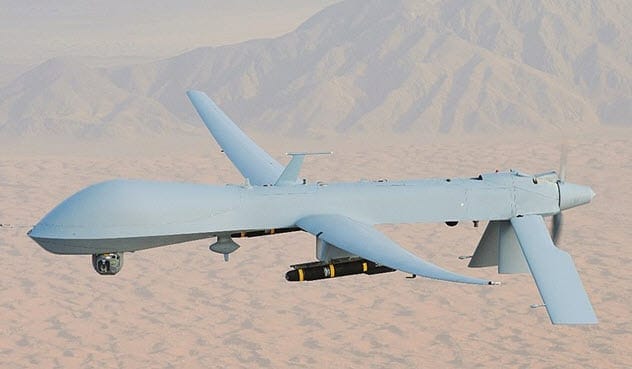
The General Atomics MQ-1 Predator entered US combat in July 1995. As the first widely deployed aerial reconnaissance drone, it transformed military operations.
Controlled remotely from anywhere globally, the MQ-1 could operate for up to 26 hours, reducing risks to pilots and operational costs. Over 25 years, 360 MQ-1 units were deployed.
The addition of Hellfire missiles turned the MQ-1A into an effective killing machine capable of engaging targets beyond visual range. Though controversial, the Predator reshaped the battlespace until its retirement in 2018, replaced by newer models.
Which of these vehicles do you think had the biggest impact on warfare? Leave your comment below!


